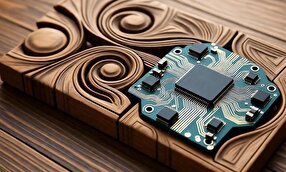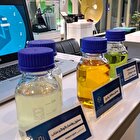NASA Finds Venus Has Surprisingly Thin Crust

This crustal “metamorphism” gives scientists a whole new perspective on how Venus churns beneath its blistering surface. Upcoming missions like DAVINCI and VERITAS aim to find out just how alive the planet still is.
Venus, often called Earth’s hotter twin, may have a much more dynamic crust than scientists once thought. New NASA-funded research reveals surprising activity beneath the surface of this scorching planet, shedding light on how Venus might be reshaping itself from the inside out.
For a long time, scientists believed that Venus’ outer crust simply kept getting thicker over time. Since the planet doesn’t have the kind of plate tectonics we see on Earth, there didn’t seem to be a way for crust to return to the interior.
But a new study, published in Nature Communications, suggests something different is happening. Instead of just piling up, parts of Venus’ crust may be breaking off or melting due to pressure and density changes deep below the surface. This process is known as metamorphism, and it may be key to understanding how Venus stays geologically active.
On Earth, the crust is broken into large moving plates that interact at their boundaries. These slow but powerful movements form mountains, trenches, and earthquakes in a process called plate tectonics. When two plates collide, the denser one can be pushed down into the mantle below in a process called subduction. As that plate sinks, the increasing heat and pressure change the rocks in a transformation known as metamorphism. This not only alters the crust but also plays a major role in driving volcanic activity.
In contrast, Venus has a crust that is all one piece, with no evidence for subduction caused by plate tectonics like on Earth, explained Justin Filiberto, deputy chief of NASA’s Astromaterials Research and Exploration Science Division at NASA’s Johnson Space Center in Houston and a co-author on the paper. The paper used modeling to determine that its crust is about 25 miles (40 kilometers) thick on average and at most 40 miles (65 kilometers) thick.
“That is surprisingly thin, given conditions on the planet,” said Filiberto. “It turns out that, according to our models, as the crust grows thicker, the bottom of it becomes so dense that it either breaks off and becomes part of the mantle or gets hot enough to melt.” So, while Venus has no moving plates, its crust does experience metamorphism. This finding is an important step toward understanding geological processes and evolution of the planet.
“This breaking off or melting can put water and elements back into the planet’s interior and help drive volcanic activity,” added Filiberto. “This gives us a new model for how material returns to the interior of the planet and another way to make lava and spur volcanic eruptions. It resets the playing field for how the geology, crust, and atmosphere on Venus work together.”
The next step, he added, is to gather direct data about Venus’ crust to test and refine these models. Several upcoming missions, including NASA’s DAVINCI (Deep Atmosphere Venus Investigation of Noble gases, Chemistry, and Imaging) and VERITAS (Venus Emissivity, Radio Science, InSAR, Topography, and Spectroscopy) and, in partnership with ESA (European Space Agency), Envision, aim to study the planet’s surface and atmosphere in greater detail. These efforts could help confirm whether processes like metamorphism and recycling are actively shaping the Venusian crust today—and reveal how such activity may be tied to volcanic and atmospheric evolution.
“We don’t actually know how much volcanic activity is on Venus,” Filiberto said. “We assume there is a lot, and research says there should be, but we’d need more data to know for sure.”
4155/v





















